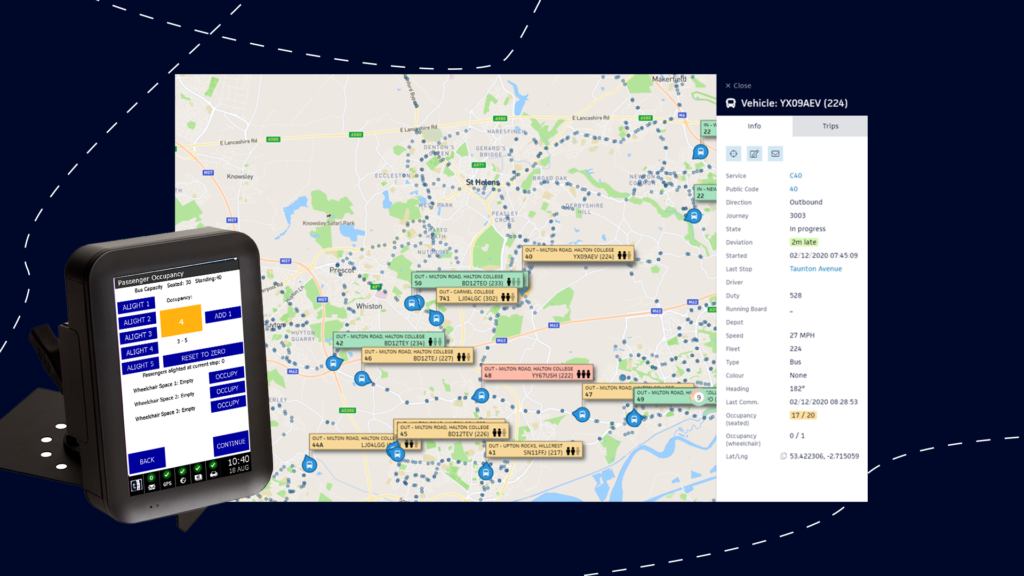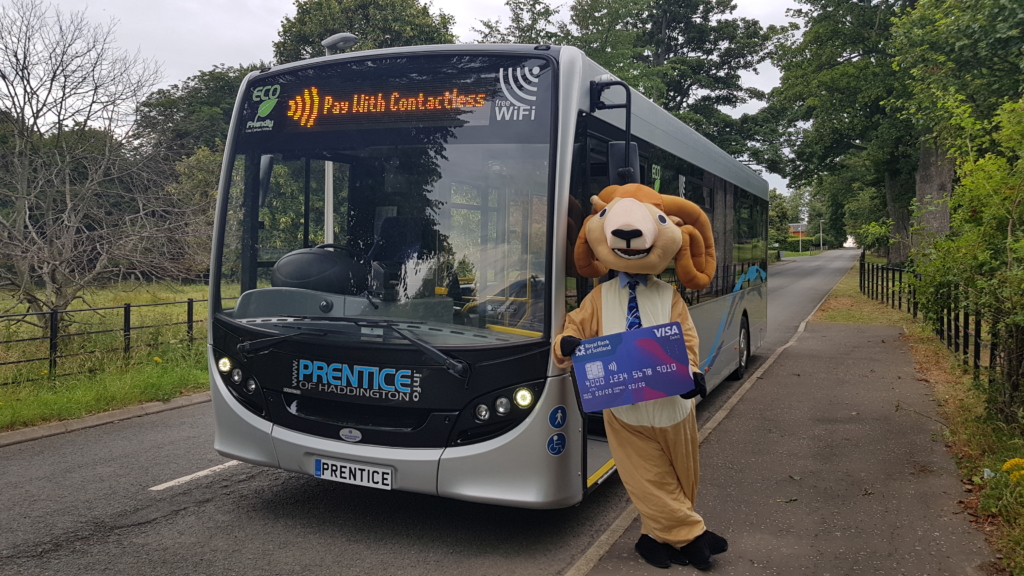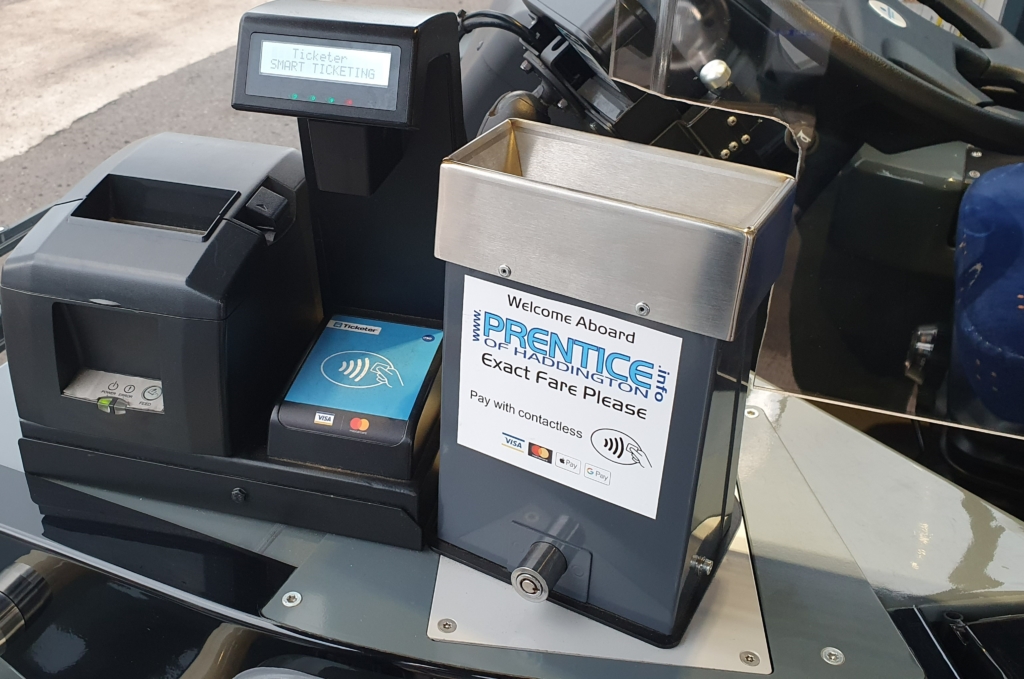Ticketer were recently featured in Route One, focusing on how we have spent a decade building a platform for the public transport ecosystem, which benefits each of our partners equally. Please read the feature written by Alex Crawford below.
For Ticketer, software as a service (SaaS) doesn’t just deliver a stream of updates and improvements – it builds a platform from which the whole industry benefits.
For over a decade, Ticketer has been building a platform for the public transport ecosystem that aims to benefit every one of its partners equally. In real terms, that means years of developments improving on the product’s features as part of the core Ticketer license.
Some examples of those along the way changes include a stream of ITSO updates. These, of course, have been delivered without extra charge, and went beyond accepting just standard concessionary passes to also include accepting and topping up commercial products; the facility to create products on the electronic ticketing machine (ETM), either on the bus or when using it as a retail POS unit; using the ITSO e-purse for top-ups; and applying top-up and product fulfilment requests from remote web-based purchases.
For EMV, Ticketer’s unique solution is in offering both ‘retail’ mode and ‘transit’ mode simultaneously, which allows operators to issue child or group tickets on contactless purchases when a tap-model is in place. The company also introduced tap-in, tap-out, the ability to top up ITSO cards with EMV, BIN blocking and the use of deny lists for anti-fraud measures. QR functionality has been improved too. QR codes can now be used in addition to a fare (such as a 50p supplement) and operators can now hotlist QR codes or report invalid use. The codes also now allow drivers to move their duty totals between buses, and Ticketer says it will shortly be introducing single-use QR codes which will be automatically hotlisted as needed.
 Updates and innovations are sent out over the air at the push of a button every week to over 600 operators of every shape and size. Every requirement delivered by Ticketer’s development team comes out available to every one of its partners. For the company, that is where the value lies.
Updates and innovations are sent out over the air at the push of a button every week to over 600 operators of every shape and size. Every requirement delivered by Ticketer’s development team comes out available to every one of its partners. For the company, that is where the value lies.
A platform for the industry
Ticketer describes that way of working as an ecosystem, generating a virtuous circle that benefits the entire industry. It is a departure from traditional ways of purchasing a solution, where products are bought with a set lifespan in mind, at which point they become obsolete… if not before.
 “The Ticketer way is to adapt the deployed solution to the needs of passengers and new industry trends,” explains Chief Marketing Officer, Sally Whitson. “Who would have thought five years ago that contactless would be what it is today? Operators can benefit from that constant evolution without re-buying kit. And where new hardware is required, it is a modular add-on, not a wholesale ETM swap.”
“The Ticketer way is to adapt the deployed solution to the needs of passengers and new industry trends,” explains Chief Marketing Officer, Sally Whitson. “Who would have thought five years ago that contactless would be what it is today? Operators can benefit from that constant evolution without re-buying kit. And where new hardware is required, it is a modular add-on, not a wholesale ETM swap.”
Ticketer is keen for its operator partners to know how valuable their suggestions will continue to be in the years to come – especially as the industry emerges from one of its most challenging times in history.
 “This platform approach to public transport technology is similar to what happens in the smartphone industry,” says Antonio Carmona, General Manager International and Head of UK Sales at Ticketer. “The operating system is constantly receiving updates and upgrades, but you can also download and install completely new apps for completely new functionality.” The company believes offering each and every one of its operator partners the same input to its development team, and distributing the cost of that development, delivers particular value to the smaller operators.
“This platform approach to public transport technology is similar to what happens in the smartphone industry,” says Antonio Carmona, General Manager International and Head of UK Sales at Ticketer. “The operating system is constantly receiving updates and upgrades, but you can also download and install completely new apps for completely new functionality.” The company believes offering each and every one of its operator partners the same input to its development team, and distributing the cost of that development, delivers particular value to the smaller operators.
For those, the biggest barrier to owning high performing technology is often deployment cost. Those costs are reduced if they are able to use the technology that has already been developed for the industry as a whole. “We offer the opportunity to subscribe to something that is dynamic and constantly evolving, which lowers the cost and barriers to entry,” Sally explains. “That’s what we mean by the democratisation of the technology. The smaller operators sometimes lack the funds for tech that the bigger groups have, and by joining our platform, they can avoid high capital and development expenditure to deploy the system.
The solution is priced very simply, and there is 100% predictability of how much any operator will pay, since the solution is not priced on estimations of future developments. Founder John Clarfelt has always made this commitment to equality a hugely important point. “It’s so key to what we do,” he says. “The smaller operator is often the one which picks up a passenger from a rural village and carries them to the main route to be picked up by the larger operators. Everyone is dependent on each other, so we have to give everyone the same offering – if the small operator doesn’t have EMV payment method, it might lose a passenger – and then the big operator equally loses that passenger as well.”
A turning point for bus services
To some of its partners, it might not be immediately obvious how much Ticketer is evolving. “I never knew you did that,” is a common reaction during conversations, John
reveals. That can be a difficult conundrum to solve – but examining how the offering has made a difference for an individual operator over the years makes it plainer to see.
Prentice of Haddington has worked with Ticketer for almost six years now. Managing Director, Ross Prentice chose Ticketer at the time for the features available on its ETMs and its user portal, their ease of use, and, of course, the enthusiasm of John and his team
Over the years, as Ticketer’s offering has grown, Ross has come to utilise as many of the features as possible in the platform. As a result, it has become one of the most
important parts of his business. “I have often commented that moving to Ticketer was one of the best business decisions I’ve ever made,” he says. “We didn’t know it at the time, but it would become a turning point for our bus services and the business as a whole.” Ross has kept as up to date as possible with changing technology. He reveals that Prentice was the first operator in its area to introduce contactless payments, a smartcard that could be topped up online, and
it was the first operator in its area where school pupils used a smartcard pass as opposed to a printed one. Passengers benefit from a variety of ticket types, from paper to smartcard and app, but mostly through contactless.
 One of Ross’ favourite features has been the analytics which provide information that can be used to examine, review, and improve services. That has expedited change and adaptation to keep on top of passenger demands. “The ability to see tickets being issued almost as it happens on a bus is great and can be used should any query arise. Longer term, the analytics the system provides has allowed us to improve our services or alter journeys to better suit customers,” he says. The system itself, which uses hardware and a software licence, has also proved ideal for Prentice’s needs. Ross reveals it helped the company on its journey into running commercial bus services: “The main advantage has been the regular updates which means we are always running the latest software, and the ability to log in from anywhere on pretty much any device and view, check, or adjust any setting.
One of Ross’ favourite features has been the analytics which provide information that can be used to examine, review, and improve services. That has expedited change and adaptation to keep on top of passenger demands. “The ability to see tickets being issued almost as it happens on a bus is great and can be used should any query arise. Longer term, the analytics the system provides has allowed us to improve our services or alter journeys to better suit customers,” he says. The system itself, which uses hardware and a software licence, has also proved ideal for Prentice’s needs. Ross reveals it helped the company on its journey into running commercial bus services: “The main advantage has been the regular updates which means we are always running the latest software, and the ability to log in from anywhere on pretty much any device and view, check, or adjust any setting.
“There is also the advantage of there being no storage or back up issues, since the system is cloud-based. Having a product which is reliable with excellent back up if there are any issues means we don’t need lots of spare ETMs.”
A friend in times of need
Trying to remind all of its customers what they receive with a Ticketer licence is, John admits, a challenge at times – especially when updates are not headline-grabbing, and might, for example, concern a better view of tracking or adherence to ITSO standards at a time when operators are more concerned on immediate issues like staffing during a pandemic. For John, this is about more than reminding Ticketer’s partners of why they are so integral to the platform. It’s also about reminding them that they have a friend they can turn to in times of need, and a platform which will protect them against future changes and demands.
“It’s so tough right now and I want our partners to know they have someone watching their back,” he says. “We need their feedback. It tells us what sort of enhancements will make their businesses more resilient in tough times.” That symbiosis has already been proven during the global pandemic. Operators working with Ticketer now can tell when their buses were last disinfected, and the passenger occupancy feature has become essential to maintaining physical distancing measures on vehicles. Those developments, made possible through the flexibility of Ticketer’s platform approach, reinforce the idea that such rapid change can make the difference between a passenger choosing to board or not. And many of the solutions accelerated by COVID-19 will go a long way beyond the pandemic.
As Ticketer continues to evolve, the ongoing feedback loop from operators will continue to help keep it ahead of the curve, ready to serve the industry’s needs. “The flexibility of the platform approach ensures that a user’s business is future-proof,” says Antonio. “Especially when passenger demands and travel patterns are changing. It opens an unmatched opportunity for buses to come back stronger when we leave COVID-19 behind.”
To read the full Route One feature, please click here.


